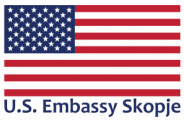The goal, according to disinformation experts, is to foment distrust on both sides of the political spectrum rather than publishing easily identifiable fake social media posts. With Beijing starting to flex its muscles on Western social media platforms, many of its officials are becoming bolder in how they use Twitter. This comes straight from Russian and Chinese backed media and officials.
The world is focused on America where demonstrations against racial injustice sweep across the nation, leading to clashes between protestors and police. The images of chaos and destruction from cities all over the US are leaving nobody indifferent, even as videos and reports of police solidarity with protestors tug at the heart. The protests have gone global with thousands gathering to chant “I can’t breathe” in honor of George Floyd, the black man killed last week in police custody in Minnesota.
From Minneapolis to Syria, artists are honoring George Floyd through murals and public artworks[1]. Syrian artists Aziz Asmar and Anis Hamdoun finish a mural depicting George Floyd in Syria’s northwestern Idlib province[2].
[1] https://www.thisiscolossal.com/2020/06/george-floyd-global-murals/
[2] https://abcn.ws/2TWPRXy
But not everyone is interested in solidarity with the ongoing crisis in the U.S. preliminary reports suggest that some foreign actors are already seeking to instrumentalize the crisis for their own ends. Russia and China are flooding social media with content targeting the ongoing unrest and violence in the United States, according to an analysis of recent Twitter posts by POLITICO[1].
Since May 30, government officials, state-backed media outlets and other Twitter users linked to either Beijing or Moscow have increasingly piggybacked onto hashtags linked to George Floyd, whose death in police custody, set off days of nationwide protests, to push divisive messages and criticize Washington’s handling of the unfolding crisis. But caution is advised. As one of the experts puts it: “Researchers need to be very cautious and responsible. Will you find indicators of coordination on social media? Of course! By its nature, effective activism is coordinated. Are foreign state actors amplifying narratives around the protests for their own gain? Absolutely! It’s become an international media event that aligns neatly with their broader political agendas. Will foreign state actors seek ways to stoke the protests? Probably? But make no mistake, we’d be where we are with or without any foreign efforts to push it along.”[2].
Noteworthy, as well is the difference in coverage for domestic audiences, as detailed for instance in this Daily Beast article by Julia Davis. While reports by Russian state-sponsored media on American soil have appeared to sympathize with the protestors, state media outlets at home paint a very different picture. A notably example was an article written for the Russian tabloid Komsomolskaya Pravda by Dmitry Steshin, mocking American protestors by referring to “muscular criminal Negroes” and describing “twerking” as the “national Negro dance”. Steshin posted the same text on social media, with the caption “Kindly Advise to the Negroes of Minnesota and the United States. Beat the whites until they turn black.”
That post was subsequently shared on Telegram by Margarita Simonyan, RT’s editor-in-chief, and exposed for English audiences in a tweet by Bellingcat. Rather than apologize for this blatant display of racism, RT doubled down and attacked Bellingcat instead, falsely accusing the open-source investigative group of “fueling US race riots”.
“Russia is doing right now what Russia always does,” said Bret Schafer, a media and digital disinformation fellow at the German Marshall Fund of the United States’ Alliance for Securing Democracy, a think tank in Washington. “But it’s the first time we’ve seen China fully engaged in a narrative battle that doesn’t directly affect Chinese interests.” Over the last three days, Chinese ambassadors, Russian-backed news outlets and others with ties to Russia and China have tweeted more than 1,200 times about the United States, often using hashtags like #BlackLivesMatter and #Minneapolis, according to a review of social media activity by POLITICO. That represents the most mentions of any country, even Russia or China, since May 30, and four of the top 10 hashtags over that period from Russian and Chinese Twitter users whose messages mentioned the U.S. were associated with the ongoing violence, based on an analysis of Twitter data from the Alliance for Securing Democracy.
In online messages, often linking to videos of the recent violence, these digital actors have sought to portray the U.S. as a country on the brink, often highlighting perceived hypocrisy of Washington’s recent scolding of Beijing and Moscow for their civil rights abuses when parts of America are engulfed in flames and violence. One of the most-shared social media messages from any official Russian or Chinese account, for instance, came from Hua Chunying, spokeswoman for China’s foreign ministry. On May 30, she posted a message that said, “I can’t breathe” over a photo from the official U.S. State Department spokeswoman’s harsh words toward China’s treatment of Hong Kong. The phrase “I can’t breathe” has become a rallying cry for those in the U.S. protesting the police’s treatment of Floyd. The message from the Chinese official has been shared more than 8,000 times.
Redfish, a Berlin-based media outlet whose funding also comes from Russia, has similarly posted regular updates from its Twitter handle about the U.S. protests, including a video of the Minnesota protests on May 31 that has been shared 3,400 times. “This is what an uprising looks like,” read the tweet.
The goal, according to disinformation experts, is to foment distrust on both sides of the political spectrum rather than publishing easily identifiable fake social media posts. With Beijing starting to flex its muscles on Western social media platforms, many of its officials are becoming bolder in how they use Twitter. This comes straight from Russian and Chinese backed media and officials. Despite Beijing’s own strong-arm tactics, particularly against the country’s Uighur minority, Li Bijian, China’s consul general in Karachi, wrote: “Excessive force by police #US.” Yet, China’s official response stopped short of admitting that the discrimination took place or apologizing for it.
Meral Musli Tajroska – Psychologist, Consultant on violent extremism and radicalization, an activist for gender equality.
Sources: EuvsDisinfo, Politico.
[1] https://www.politico.com/news/2020/06/01/russia-and-china-target-us-protests-on-social-media-294315
[2] https://twitter.com/leefosterintel?lang=de


